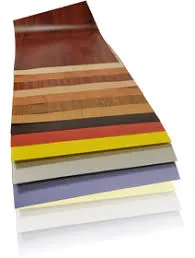- Home
- Different Varieties of Duplex Board Products and Their Applications
Dec . 10, 2024 00:26 Back to list
Different Varieties of Duplex Board Products and Their Applications
Understanding the Different Types of Duplex Board Products
Duplex board products are essential in various industries, especially in packaging and printing. Known for their lightweight yet sturdy nature, duplex boards are made from recycled paper products, making them an environmentally friendly choice. They come in various types, each tailored to specific applications. In this article, we will explore the different types of duplex board products and their unique characteristics.
1. Uncoated Duplex Board
Uncoated duplex board is one of the most commonly used types in the industry. It is made from recycled paper on its inner layers, while the outer layers are typically crafted from bleached pulp, ensuring a smooth finish. This type of duplex board is primarily utilized in packaging applications, such as food containers, cartons, and boxes. Its porous surface allows for excellent ink adhesion, making it ideal for printing purposes. Moreover, uncoated duplex board is cost-effective, which enhances its appeal among manufacturers.
2. Coated Duplex Board
Unlike uncoated variants, coated duplex board features a smooth and glossy coating on one or both sides. This coating is often made from clay or other materials, providing a high-quality finish that enhances the visual appeal of printed materials. Coated duplex boards are favored in the printing industry, particularly for high-end packaging and promotional materials. They are perfect for products that require vibrant colors and sharp images, such as cosmetic boxes, luxury packaging, and printed displays. The coating not only improves aesthetics but also adds a layer of protection against moisture and dirt.
types of duplex board products

As the name suggests, gray back duplex board has a grayish hue on one side, which is typically used for manufacturing boxes and packaging materials where the reverse side is not exposed. This type of board is thicker and more rigid than other duplex boards, offering excellent structural integrity. Gray back duplex boards are often used in applications that prioritize durability and strength, making them suitable for shipping boxes, retail packaging, and point-of-sale displays. Their economical nature also helps manufacturers reduce production costs.
4. White Back Duplex Board
White back duplex board features a white surface on one side with a gray or brown reverse side. This type is particularly popular in the food and beverage industry as it provides a clean and appealing appearance while ensuring compliance with health regulations. White back duplex boards are often used for food packaging, promotional boxes, and retail displays. The white surface allows for exceptional print quality, making them suitable for branding and product visibility.
5. Microflute Duplex Board
Microflute duplex board is a specialized type that features a fluted structure, providing enhanced strength and cushioning properties. This makes it an excellent choice for fragile items or products that require additional protection during transit. Microflute boards are lightweight yet robust, making them ideal for e-commerce packaging, retail boxes, and specialized shipping containers. Their design not only adds strength but also contributes to a more efficient use of materials, promoting sustainability in packaging solutions.
Conclusion
Understanding the various types of duplex board products is essential for businesses looking to choose the right material for their packaging and printing needs. From uncoated and coated options to specialty boards like gray back, white back, and microflute, each type has its unique benefits and applications. By selecting the appropriate duplex board, manufacturers can ensure that their products are not only well-protected but also visually appealing to consumers. As sustainability continues to be a significant concern, the use of duplex boards, made from recycled materials, plays a crucial role in promoting environmentally-friendly practices within the industry.
Latest news
-
High-Quality Bathroom Cabinet Contact Paper – Durable & Stylish Leading Suppliers, Exporters, Manufacturers
NewsJul.08,2025
-
Premium Wood Contact Paper for Desk – Reliable Suppliers & Exporters
NewsJul.08,2025
-
Premium Contact Paper for Table Top – Durable & Stylish Surface Solution from Leading Manufacturer
NewsJul.07,2025
-
Duplex Board with Grey Back - Reliable Supplier & Competitive Price Manufacturer & Exporter
NewsJul.07,2025
-
Premium White Contact Paper on Cabinets – Trusted Exporters & Suppliers
NewsJul.06,2025
-
High-Quality Duplex Board Packaging for Food Reliable Manufacturer & Supplier
NewsJul.06,2025

